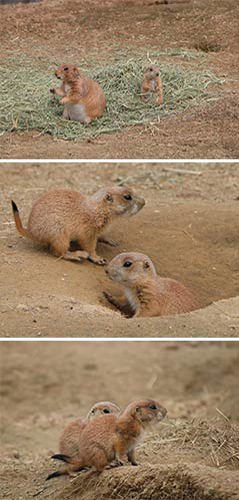Prairie dogs pups emerge from their burrows
Thursday May 12, 2022
 Visitors to Franklin Park Zoo will notice a number of tiny new faces as seven prairie dog pups recently emerged from their burrows to explore the world above ground.
Visitors to Franklin Park Zoo will notice a number of tiny new faces as seven prairie dog pups recently emerged from their burrows to explore the world above ground.
The pups’ birth date is estimated to have been around March 20. Pups are born blind and hairless, and do not make an appearance outside of the burrow until they are about six weeks old. The pups can now be seen exploring the prairie dog habitat alongside the adults. Both male and female prairie dogs help raise the young.
“Prairie dogs are highly social animals and it will be fascinating for our guests to watch the pups grow up,” said Dr. Malu Celli, Vice President of Animal Care at Zoo New England. “A sure sign that spring has officially arrived is when we begin to spot the tiny pups emerging from their burrows. The first pup was seen on May 1, and the care team has been closely monitoring the pups since they’ve emerged from their underground home.”
Because the pups are born underground, the care team will not know how many pups were born this season until they all leave the burrows, which should happen by the end of May.
Black-tailed prairie dogs are not actually dogs at all. They are small, stout, tan rodents with a lightly white or buff-white belly. They have short black tails, small ears, dark eyes and long claws used for digging.
Black-tailed prairie dogs are found in short-grass prairie habitats of western North America, from southern Saskatchewan down to northern Mexico. They form complex, widespread underground burrow systems, and avoid areas of heavy brush or tall grass due to reduced visibility. Prairie dogs live in what are called towns or colonies. These colonies are further divided into territorial neighborhoods called wards. Within the wards are coteries, which are family groups comprised of a male, one to four females and offspring under two years old.


